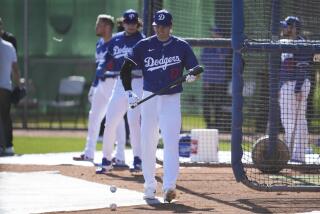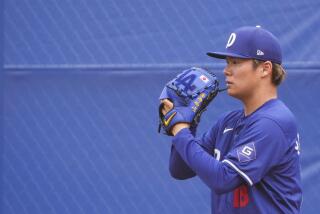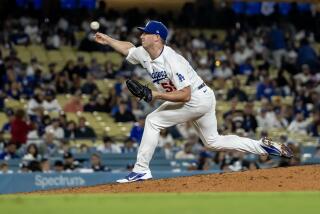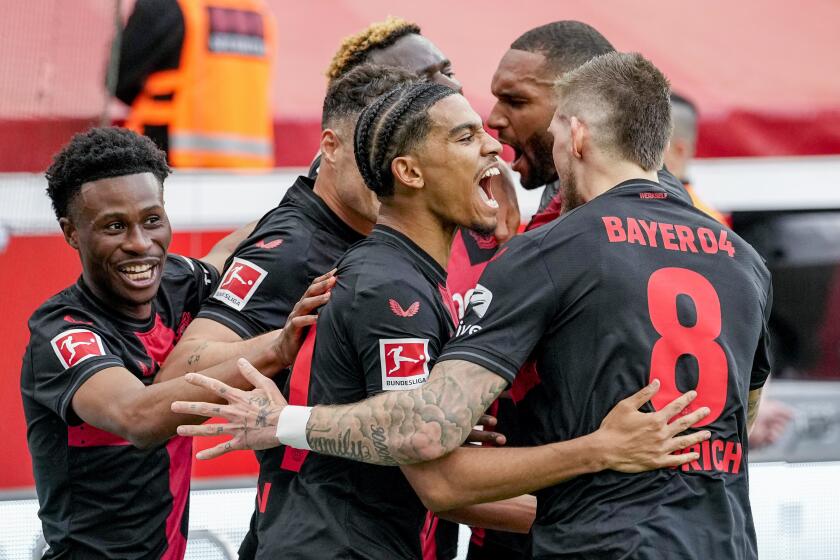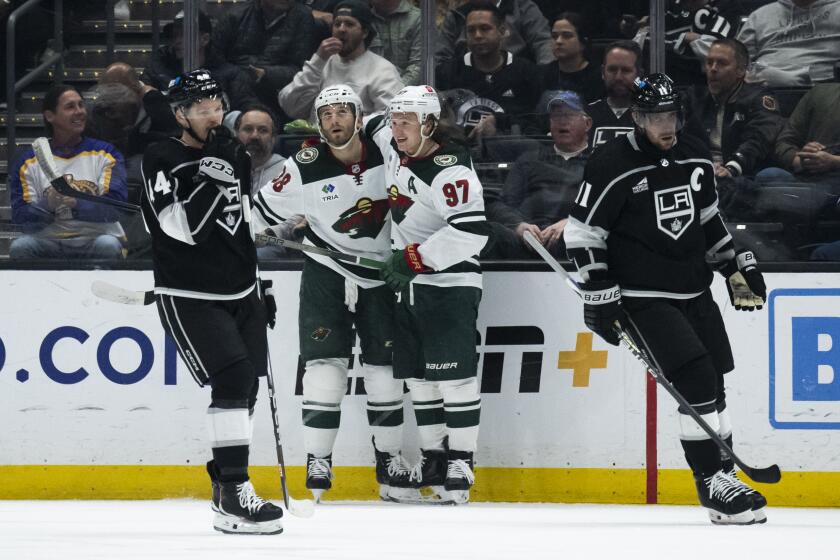Angels catcher Chris Iannetta looks to improve pitch-framing ability

New statistics that quantify the art of pitch-framing can be difficult for even major league catchers to comprehend.
“They could be accurate, they could be inaccurate,” Angels catcher Chris Iannetta said. “You never really know.”
What Iannetta is sure of is that, according to advanced metrics, he is not very good at turning balls into strikes. He is working diligently this spring to improve, watching video of catchers who excel at it and asking umpires for advice on where to set up and how to give them better visuals.
“It’s something I really take pride in. I’m really trying to work on it,” Iannetta said. “Some of the numbers last year are not where I want them to be, and that was surprising.
“I get really good reviews from umpires in what I do and how I work, and I see some discrepancies. It’s disappointing. So my goal is to get as good as I can, to be in the top five, top 10.”
According to Baseball Prospectus, Iannetta ranked 87th among 105 catchers in gaining extra strikes last season with a score of minus-19, meaning he had 19 more projected strikes turned into balls than he had balls turned into strikes.
As a comparison, San Francisco catcher Buster Posey led baseball with a score of plus-179.6, meaning Giants pitchers had 180 more strikes called because of Posey’s pitch-framing ability.
This was not a one-year aberration for Iannetta. He ranked 115th out of 116 catchers with a score of minus-11.3 in 2013 and 100th out of 108 catchers with a score of minus-50.6 in 2012.
“It was brought to my attention toward the end of last year,” Iannetta said. “I never really knew. I always thought I was pretty good. … I don’t like the fact that this was something I was labeled as. It didn’t jibe with what I thought I was doing or the reviews I was getting.”
Iannetta, 31, is starting his 10th big league season and his fourth with the Angels.
To frame pitches, a catcher must have soft, quiet hands and avoid late movement or lunging while receiving the ball. Iannetta wonders if his 2014 numbers were skewed by hard-throwing right-hander Garrett Richards, whose lively 96-mph fastball and nasty breaking pitches can be difficult to catch, let alone frame.
“I might have to adjust my glove positioning,” Iannetta said. “I try to keep a low target, but maybe my ‘relaxation point’ was a little too high,” leading umpires to believe that pitches he reaches slightly down for are below the strike zone.
“Maybe it was a false bottom,” Iannetta said. “I definitely wasn’t bringing the ball out of the strike zone. I was stopping it right where I caught it. … It’s very subtle, how it plays out.”
Angels Manager Mike Scioscia, the former Dodgers catcher, remains a little skeptical about pitch-framing statistics. “Some of the studies are young, and I think you get confidence in them as they earn their merit,” he said.
But pitch-framing has clearly been a focus in Iannetta’s work with bullpen coach Steve Soliz this spring, and Iannetta appears to be making progress.
In the fifth inning of Tuesday’s game against Colorado, Iannetta barely moved as he received called third strikes from reliever Cam Bedrosian on two consecutive batters, Nolan Arenado and Justin Morneau.
“Chris has worked very hard on that aspect, and he takes it to heart,” Scioscia said. “I think he’s receiving the ball well, and even though he hasn’t been ranked very high, he still does the job we need back there to help our pitchers. There’s no doubt he’s become a more effective receiver from when he first got here.”
Twitter: @MikeDiGiovanna
More to Read
Get our high school sports newsletter
Prep Rally is devoted to the SoCal high school sports experience, bringing you scores, stories and a behind-the-scenes look at what makes prep sports so popular.
You may occasionally receive promotional content from the Los Angeles Times.

